|
Monday 25th to
Sunday 31st October 2021 |
| |
|
On the morning of Monday 25th October,
Mercury is at its greatest elongation or in other words the planet appears
to be the furthest it gets from the Sun. If you look just south of east
from about 6.15am, Mercury will have risen above the horizon. To the left
of Mercury, slightly north of east will be the bright star Arcturus. |
| |
|
Please remember that if you are using
binoculars or a telescope, make sure you don't catch even a glimpse of the
Sun rising an hour later. |
| |
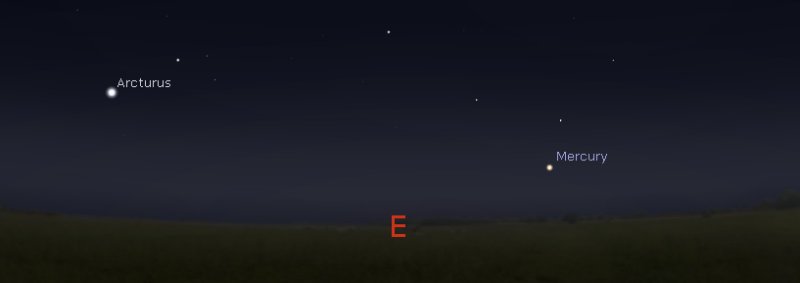 |
| |
|
Moving towards the end of the week and the
evening shift, on Friday 29th a "Last Quarter" Moon will have risen above
the horizon in the east by 1am. If you look slightly down and to the right
of the Moon, have a go at spotting the Beehive Cluster - M44 in the Messier
Catalogue. |
| |
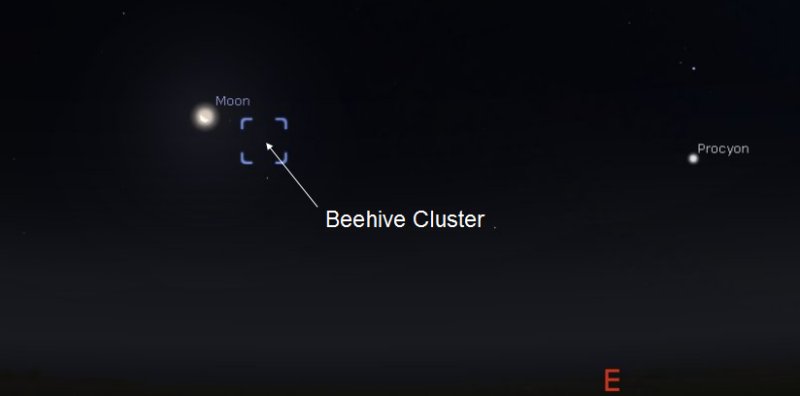 |
| |
|
The Beehive Cluster is the closest open star
cluster to the Earth and it was first observed by Galileo back in 1609. He
managed to resolve 40 stars with his early telescope. Charles Messier added
it to his catalogue of faint deep sky objects in 1769, but the cluster is
relatively bright and many believe that he only did this to boost the number
in his catalogue in competition with his rival, the French astronomer
Nicolas-Louis Lacaille. |
| |
|
The cluster has a magnitude of around 3.7 so
is best viewed with binoculars or a small telescope. The cluster is
estimated to be around 600 million years old and approximately 600 light
years away from us. That means the light you will be observing left the
stars 600 years ago and you are seeing the cluster how it was back in the
1400s when Henry V was on the throne! |
|
Monday 18th to
Sunday 24th October 2021 |
| |
|
The main event this coming week is the peak
of the Orionids meteor shower on Thursday 21st. Unfortunately we will be
just past a Full Moon and this will spoil your view of the meteors as a Full
Moon is the ultimate source of light pollution! Astronomers looking for dim
deep-sky objects will always avoid evenings around this time. It's a shame
because the Orionids is one of the best annual meteor showers. |
| |
|
The Orionids is so named because the meteors
appear to originate from a single point in the constellation of Orion - this
is known as the "radiant point". You'll need to be looking east south east
towards Orion after midnight and the meteors should be visible right through
until dawn on the Thursday morning. |
| |
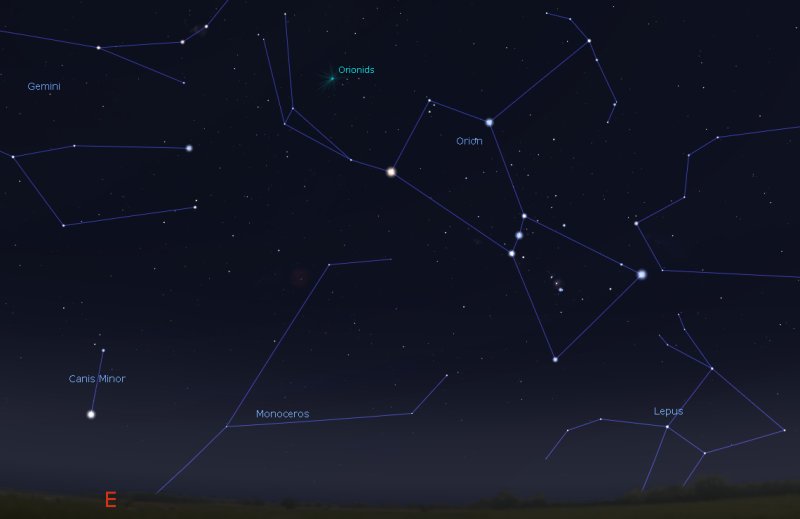 |
| |
|
The meteors or "shooting stars" are caused by
the Earth "scooping up" debris left by a comet as it travelled close to the
Sun on its orbit in from the outer reaches of the Solar System. In the case
of the Orionids, the debris comes from comet Halley that swings by the Earth
every 75 years. |
| |
|
The dust and pea-sized debris it leaves
behind enters the Earth's atmosphere at a speed of around 40 miles per
second. The streaks of light are produced by friction as the debris hits
our air. |
| |
|
The best way to view the shower is to sit in
a comfy chair facing Orion and wrap-up warm because you are not going to be
moving around much. Then just wait! There is no need for a telescope or
binoculars. |
|
Monday 11th to
Sunday 17th October 2021 |
| |
|
Last week we talked about the phases of the
Moon and I mentioned trying to see a dimly-lit Crescent Moon. Now, further
into the Moon's 29-day cycle, there is the chance to see a 67%-lit waxing
Gibbous Moon on Thursday 14th October. |
| |
|
If you look to the south around 8pm local
time, the Moon forms a triangle with Jupiter and Saturn. The pair of gas
giant planets is well-placed at the moment for observations with a
telescope. |
| |
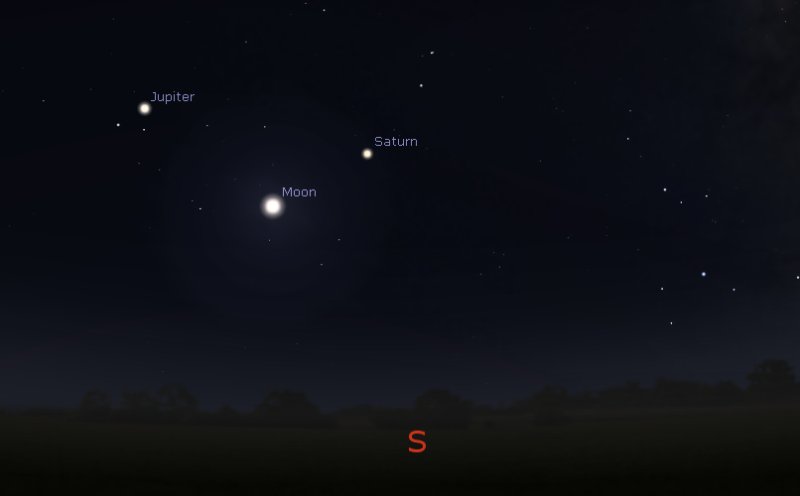 |
| |
| |
|
When observing the Moon, there are a series
of visual effects known as "clair-obscur" originating from the French words
meaning "light" and "shadow". The interplay between sunlight falling on the
lunar surface and your viewing angle creates easily-recognisable shapes. |
| |
|
If you aim your telescope towards the giant
crater Clavius on Thursday 14th from about 7.30pm, you can see an effect
known as the "Eyes of Clavius". It looks like a pair of eyes staring out of
the crater! |
| |
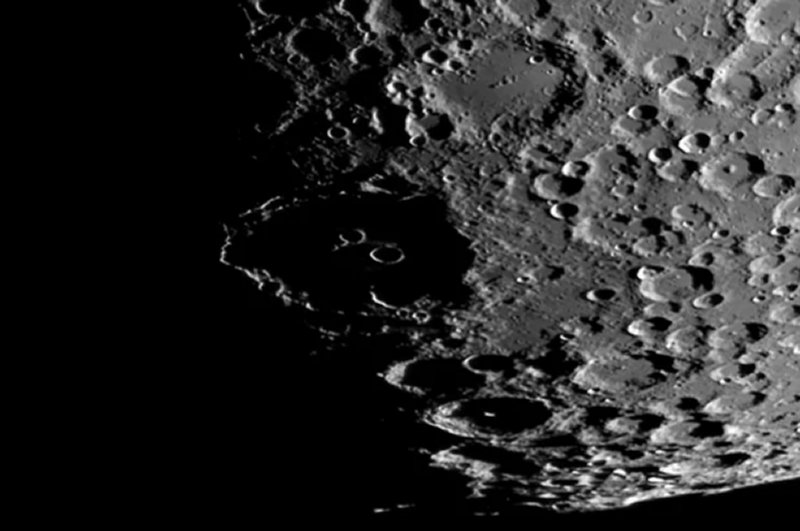 |
| |
| |
|
The
diagram below of the different clair-obscur effects makes it easy to find
Clavius, but please remember that if you are using an astronomical telescope
rather than standard binoculars, everything will be upside down and back to
front because there is no extra lens correcting the image! |
| |
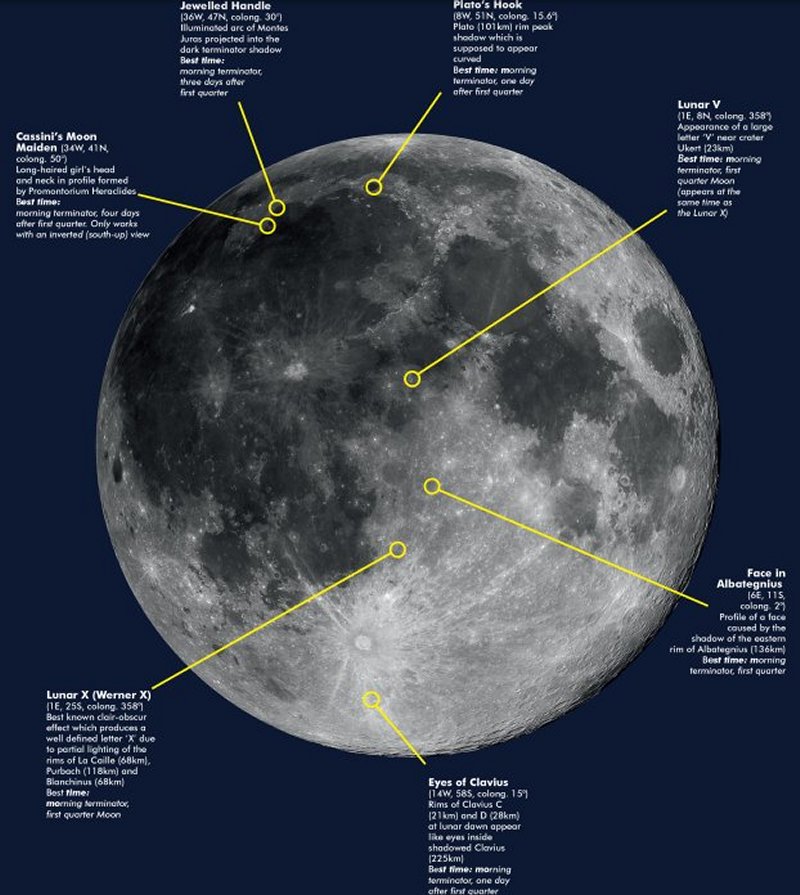 |
| |
|
Image and
diagram courtesy of Sky at Night Magazine |
|
Monday 4th to
Sunday 10th October 2021 |
| |
|
We'll start off with a visual challenge for
the early risers on Tuesday 5th - the chance to see a 1% lit waning Crescent
Moon appearing above the horizon to the east about an hour and a half before
the Sun. It is the optimal position to observe this if you can bear being
up at 6am local time. |
| |
|
If an early start isn't to your liking, on
the Thursday evening you could try spotting a 2% lit waxing Crescent Moon
close to the south west horizon shortly after the Sun sets. |
| |
|
I'm often asked what the terms "waxing" and
"waning" mean.......... |
| |
|
Our Moon passes through different visible
phases over a period of 29 days because it travels around us while we travel
around the Sun, so all the angles keep changing. The sunlight illuminating
the side of the Moon facing us varies between 0% when we have a New Moon and
100% which is a Full Moon. |
| |
|
A waxing moon gets more sunlight on it as the
days go by or in other words it's the period after a New Moon. A waning
moon progressively receives less sunlight - the days after a Full Moon. |
| |
|
There is an easy way to work out if the Moon
is waxing or waning - if the illumination is to the right hand side, it is
waxing and if to the left, waning. This is only true in the Northern
Hemisphere and assumes you are looking at the Moon with the naked eye or
binoculars - astronomical telescopes always reverse the image! |
| |
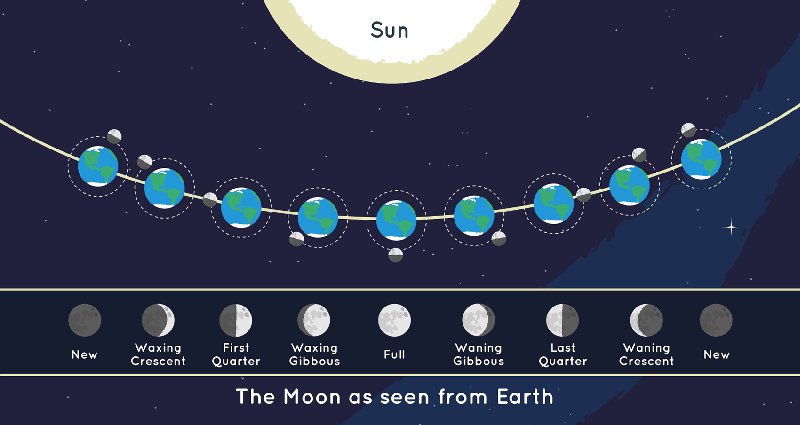 |
| |
|
Moon Phase
diagram courtesy of NASA |






